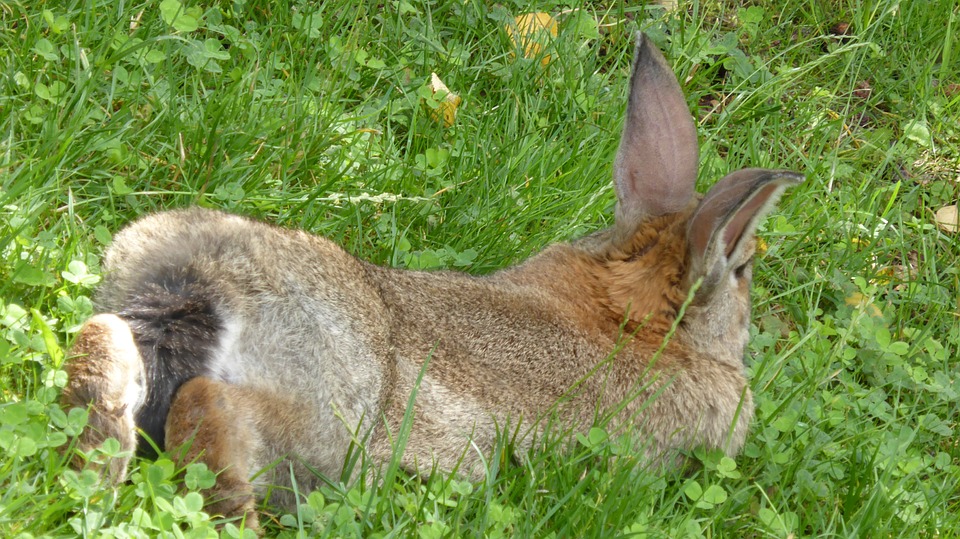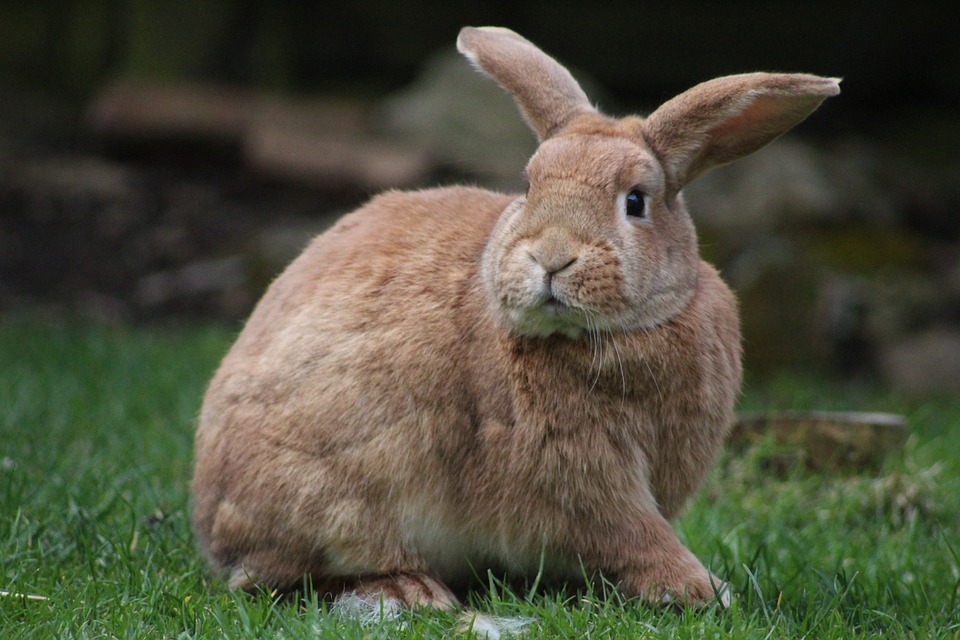This article delves into the fascinating world of rabbits and their winter behaviour. We'll explore the common misconception of rabbits hibernating and uncover the truth behind their survival strategies during cold months. We'll also discuss the adaptations they have evolved to cope with colder temperatures, their dietary changes, and how their behaviour shifts as winter approaches. We'll then examine the specific needs of pet rabbits during the winter months. Finally, we'll address some frequently asked questions about rabbit hibernation and winter care.
Part 1: Dispelling the Hibernation Myth

1.1. Understanding Hibernation: A State of Deep Dormancy
Hibernation is a state of inactivity and lowered metabolism that certain animals enter during winter to conserve energy and survive harsh conditions. This involves a significant drop in body temperature, heart rate, and breathing. Animals in true hibernation can remain dormant for weeks or even months.
1.2. Rabbits: Warm-Blooded and Active
Rabbits are homeothermic, meaning they maintain a constant body temperature regardless of their surroundings. This requires a significant amount of energy and is why they are constantly active and eating.
1.3. The Energy Challenge of Hibernation for Rabbits
Rabbits are obligate herbivores, meaning their diet consists entirely of plants. They require a continuous supply of food to maintain their energy levels and body temperature. Hibernation would make this impossible, as their food sources become scarce in winter.
Part 2: Adapting to Winter: Clever Strategies for Survival

2.1. Fur Thickening: A Winter Coat for Insulation
As days shorten and temperatures drop, rabbits shed their thinner summer coat and grow a thicker, denser winter coat. This provides crucial insulation against the cold, helping them maintain their core body temperature. The new coat can be significantly thicker and denser than the summer coat, trapping warm air close to the body.
2.2. Nest Building: Finding Shelter from the Elements
Rabbits seek shelter in burrows or build nests in sheltered areas to escape the elements. These nests offer protection from wind, rain, and snow, providing a safe space for resting and sleeping. Nests are often built in secluded areas like under dense bushes, in hollow logs, or even within abandoned burrows.
2.3. Torpor: A Short-Term Energy Saving Mechanism
While not true hibernation, rabbits engage in a form of torpor, a short period of reduced activity and lowered metabolism. This allows them to conserve energy during particularly harsh weather conditions, but they still need to eat regularly. Torpor is a temporary state that lasts for a few hours, allowing the rabbit to conserve energy without fully shutting down their body systems.
2.4. Increased Food Intake: Fueling Up for the Cold
Rabbits increase their food intake during winter to compensate for the energy required to maintain body temperature. This means they require access to sufficient food sources, even during periods of snow cover. They often rely on stored food reserves in their burrows, or forage for food in areas where snow cover is minimal.
Part 3: Winter Behavior: A Shift in Activity and Social Life
3.1. Activity Patterns: Less Active, But Not Dormant
Rabbits become less active during winter, spending more time resting in their burrows or nests. However, they still emerge for brief periods to feed and forage. Their activity patterns are often dictated by the availability of food and the severity of the weather conditions.
3.2. Social Interactions: Huddling for Warmth and Companionship
Winter may lead to increased social interaction among rabbits. They often huddle together for warmth and companionship, especially in cold weather. This behaviour is particularly common in rabbit colonies, where individuals can share body heat and create a micro-climate within their burrows.
3.3. Mating Behaviour: A Decrease in Breeding Activity
While rabbits can breed year-round, mating activity generally decreases during winter due to shorter day lengths and colder temperatures. The reduced availability of food and the challenges of raising young in harsh weather conditions make it less advantageous for rabbits to breed during winter.
Part 4: Caring for Pet Rabbits in Winter: Ensuring Their Comfort and Safety
4.1. Providing Adequate Shelter: Protection from the Cold and Elements
Ensure your pet rabbit has access to a warm, draft-free shelter, especially during cold weather. A rabbit hutch or indoor cage should be insulated and protected from the elements. Straw bedding can provide extra warmth and insulation within the shelter.
4.2. Food and Water Availability: Maintaining Nutrition and Hydration
Rabbits need unlimited access to fresh water and a diet of hay, fresh vegetables, and a small amount of pellets. In winter, their diet may need to be adjusted to provide extra calories for warmth. This can be achieved by offering high-quality hay, such as Timothy hay, and increasing the proportion of leafy greens in their diet.
4.3. Temperature Regulation: Avoiding Extreme Cold
Indoor rabbits may require a heating pad or other heat source in extremely cold weather. Keep an eye on their body temperature and adjust their environment accordingly. A heating pad should be placed in a safe area within the rabbit's shelter, and it is essential to ensure that the pad is not too hot and that the rabbit can move away from it if they get too warm.
4.4. Vet Checkups: Maintaining Good Health
Regular veterinary checkups are essential for rabbits, particularly during winter. A vet can ensure your rabbit is healthy and address any potential health concerns. Winter can be a stressful time for rabbits, and they may be more susceptible to illness. Regular vet checkups can help identify any problems early on.
Part 5: FAQs: Addressing Common Questions About Rabbit Hibernation and Winter Care
5.1. Do rabbits sleep all winter?
No, rabbits do not sleep all winter. They are active, albeit less so than in summer, and require regular food and water. While they may spend more time resting in their burrows during cold weather, they still need to emerge to eat and forage.
5.2. How cold is too cold for a rabbit?
Temperatures below freezing can be dangerous for rabbits. They should be kept in a warm, draft-free environment. The ideal temperature range for pet rabbits is between 10°C and 21°C. If temperatures fall below this range, it is important to provide additional warmth and insulation.
5.3. Do rabbits need to be brought inside in winter?
Outdoor rabbits need adequate shelter and protection from the elements, but bringing them indoors can be beneficial in extremely cold weather. Indoor rabbits generally require a larger living space and a designated rabbit-proofed area to ensure their safety.
5.4. What are the signs of a rabbit struggling in winter?
Signs of a rabbit struggling in winter include lethargy, shivering, decreased appetite, and respiratory distress. If you notice these signs, seek veterinary attention immediately. These are signs that the rabbit may be too cold and needs immediate help.
5.5. Can rabbits be overfed in winter?
Yes, rabbits can be overfed in winter if they are given too much food. It's important to monitor their weight and adjust their diet accordingly. Obesity can put rabbits at risk for health problems, especially during winter when they are less active.
5.6. Do rabbits need extra hay in winter?
Yes, rabbits need unlimited access to hay, particularly in winter, as it provides essential fibre for their digestive system and helps them stay warm. Hay is a good source of calories and nutrients and can help rabbits maintain their body temperature.
5.7. Can I use a heating pad for my rabbit?
Heating pads can be helpful in extremely cold weather, but they must be used safely and with proper supervision. Ensure the pad is not too hot and that the rabbit has a way to escape if they get too warm. The pad should be placed in a safe area within the rabbit's shelter, and it's essential to monitor the temperature of the pad regularly.
5.8. Can I put a blanket on my rabbit in winter?
A blanket can provide additional warmth for a rabbit, especially if they are kept indoors. However, ensure the blanket is made of a safe material that the rabbit cannot chew or ingest. It's also important to ensure that the blanket does not restrict the rabbit's movement or prevent them from accessing their food and water.
This article has explored the fascinating world of rabbits and their winter behavior, dispelling the myth of hibernation and revealing the strategies they employ to survive the cold months. Understanding their needs and adapting their care accordingly ensures their well-being throughout the winter season.
Everyone is watching
-

Do Rabbits Lay Eggs? (The Surprising Truth)
OTHER TYPES OF PETSThis article will unravel the common misconception that rabbits lay eggs, exploring the fascinating world of r...
-

Can Rabbits Eat Grapes? A Guide to Safe Rabbit Treats
OTHER TYPES OF PETSThis comprehensive guide will explore the safety and suitability of grapes for rabbits, providing detailed inf...
-

What's a Group of Rabbits Called? (A Comprehensive Guide)
OTHER TYPES OF PETSThis article delves into the fascinating world of rabbits, exploring the various terms used to describe a grou...
-

Predators That Hunt Rabbits: A Guide to Natural Enemies
OTHER TYPES OF PETSI've always been fascinated by the circle of life, that delicate dance between predator and prey. Growing up ...
-

Are Rabbits Nocturnal Animals?
OTHER TYPES OF PETSThe question of whether rabbits are nocturnal animals is a fascinating one, with a surprisingly complex answer...
